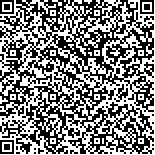| 引用本文: | 濮梦圆,徐锦前,胡恺源,彭凯,龚志军,蔡永久,项贤领.洪泽湖湖滨带浮游动物群落结构及驱动因素.湖泊科学,2023,35(2):610-621. DOI:10.18307/2023.0218 |
| Pu Mengyuan,Xu Jinqian,Hu Kaiyuan,Peng Kai,Gong Zhijun,Cai Yongjiu,Xiang Xianling.Community structure and driving factors of zooplankton in the littoral zone of Lake Hongze. J. Lake Sci.2023,35(2):610-621. DOI:10.18307/2023.0218 |
|
| |
|
|
| 本文已被:浏览 2935次 下载 2888次 |

码上扫一扫! |
|
|
| 洪泽湖湖滨带浮游动物群落结构及驱动因素 |
|
濮梦圆1,2, 徐锦前1,2, 胡恺源2, 彭凯2, 龚志军2,3, 蔡永久2,3, 项贤领1,3
|
|
1.安徽师范大学生态与环境学院, 芜湖 241002;2.中国科学院南京地理与湖泊研究所, 湖泊与环境国家重点实验室, 南京 210008;3.皖江流域退化生态系统的恢复与重建省部共建协同创新中心, 芜湖 241002
|
|
| 摘要: |
| 湖滨带在维持物种多样性、拦截陆源污染物、净化水质等方面发挥着重要作用。近年来,洪泽湖水体污染日益加重,湖滨带面临着围垦、养殖和泥沙淤积等严重威胁。为更好地理解洪泽湖湖滨带浮游动物群落结构的空间格局,运用主成分分析、冗余分析和方差分解,探究了洪泽湖湖滨带浮游动物的密度、生物量和种类结构组成,以及群落多样性和优势种的特征,分析上述参数随环境因子的变化趋势。结果表明,洪泽湖湖滨带浮游动物平均丰度为821.65 ind./L,平均生物量为1247.45 μg/L,成子湖西浮游动物丰度较高,物种较为丰富;淮河口和东部湖岸丰度较低,多样性较低。主成分分析和冗余分析结果表明,溶解性总磷、悬浮物、叶绿素a、COD、溶解性有机碳、水草盖度、pH、溶解氧和风浪扰动是湖滨带主要环境影响因子,与轮虫物种的空间分布具有显著相关性。方差分解结果表明,轮虫主要受到水化学环境因子及其与食物饵料的交互作用,枝角类受水深、浊度和悬浮物等物理生境因子的影响,磷酸盐、pH、风浪扰动和悬浮物与水化学的交互作用对桡足类有明显影响,多样性指数主要受水化学环境因子、物理生境因子、食物饵料的交互作用影响。可见,加强洪泽湖湖滨带生态环境保护和综合管理对维持浮游生物群落结构稳定具有重要意义。 |
| 关键词: 洪泽湖 湖滨带 浮游动物 环境因子 群落结构 驱动因子 |
| DOI:10.18307/2023.0218 |
| 分类号: |
| 基金项目:江苏省水利科技项目(2019005, 2019004)、国家自然科学基金项目(42171119, 31872208)、中国科学院青年创新促进会项目(2020316)和安徽高校协同创新项目(GXXT-2020-075)联合资助。 |
|
| Community structure and driving factors of zooplankton in the littoral zone of Lake Hongze |
|
Pu Mengyuan1,2, Xu Jinqian1,2, Hu Kaiyuan2, Peng Kai2, Gong Zhijun2,3, Cai Yongjiu2,3, Xiang Xianling1,3
|
|
1.School of Ecology and Environment, Anhui Normal University, Wuhu 241002, P. R. China;2.Nanjing Institute of Geography and Limnology, State Key Laboratory of Lake Science and Environment, Chinese Academy of Sciences, Nanjing 210008, P. R. China;3.Collaborative Innovation Center of Recovery and Reconstruction of Degraded Ecosystem in Wanjiang Basin Co-founded by Anhui Province and Ministry of Education, Wuhu 241002, P. R. China
|
| Abstract: |
| The littoral zone plays an important role in maintaining species diversity, intercepting land-based pollutants, and purifying water bodies. In recent years, the water pollution of Lake Hongze has become increasingly serious, and its littoral zone is facing great threats such as reclamation, aquaculture and sediment deposition. To better understand the spatial pattern of littoral zooplankton communities in the Lake Hongze, the density, biomass and species composition, diversity and dominant species of littoral zooplankton communities were explored, and their relationship with environmental factors were analyzed using statistical analysis including principal component analysis, redundancy analysis and variance decomposition. Results showed that the average abundance of zooplankton was 821.65 ind./L, and an average biomass of 1247.75 μg/L. The zooplankton in the west of Lake Chengzi has higher biodiversity and biomass comparing to the estuary of the Huaihe River and the eastern lakeshore. The principal component analysis and redundancy analysis show that total dissolved phosphorus, suspended solids, chlorophyll-a, COD, dissolved organic carbon, coverage of waterweeds, pH, dissolved oxygen, and disturbance of wind waves were key environmental factors in the littoral zone, which were closely related to the spatial distribution patterns of rotifer species. The variance decomposition results reveal that rotifers are mainly affected by water chemical factors and their interactions with food. Cladocera is affected by physical habitat factors such as water depth, turbidity and suspended solids. The phosphate, pH and the interactions of hydrochemistry features and disturbance of wind waves as well as suspended solids had significant effects on Copepods community. The diversity index was mainly affected by the interaction of hydrochemical factors, physical habitat factors and food. Therefore, strengthening the ecological environment protection and comprehensive management of the littoral zone of Lake Hongze is of great significance to maintain the stability of the plankton community structure. |
| Key words: Lake Hongze lakeshore zone zooplankton environmental factors community structure driving factor |
|
|
附件
|
|